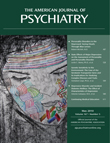Dr. Hien Replies
To the Editor: In studying treatments for comorbidity with PTSD and addiction, deciding which aspects of improvement should be of primary focus in order to determine clinically meaningful effects remains a challenge. In our article, we attempted to provide a model for examining the complicated relationship between PTSD and substance use disorders, thereby laying the groundwork for future studies that might address questions related to treatment mechanisms. While our study sheds light upon this issue, we recognize that more research is needed to further explain how treatments work and to identify the root causes of the symptoms before us.
Dr. Chambers presents a pharmacologic interpretation of our research, suggesting that the data could reflect a neurobiological change unrelated to whether or not drug use impacts PTSD. In a different study, we too might have hypothesized this model. What Dr. Chambers does not take into account, however, is the fact that we employed a nonpharmacologic intervention. Our active treatment was a cognitive-behavioral trauma group psychotherapy, embedded within a self-medication framework. Not only was an examination of whether cognitive interventions change neurobiology beyond the scope of our study, we presently also lack the methods to conduct such a test. Further, since meta-analyses comparing psychopharmacologic findings (1) with behavioral findings have shown the superiority of behavioral treatments for PTSD, we could not conclude that biological processes alone drive treatment outcomes.
Nonetheless, a solid body of evidence on the neurobiology of the stress response reveals overlap in the neural pathways of individuals with PTSD and substance use (2). Understanding more about how interventions impact these pathways will lend important insights into the treatment of both disorders. We agree with Dr. Chambers that a self-medication model cannot fully capture the intricate mechanisms in the relationship between the disorders. He also makes an excellent point that if improvements in PTSD do indeed diminish substance use, then the converse pathway should also be testable: substance use reductions alone should lead to PTSD symptom escalation. That said, we are not aware of any treatment studies that have actually tested this hypothesis, including our own.
Ultimately, our hope is that advances in methodology alongside translational studies will bridge the gap between cognitive neuroscience methods and treatment, allowing researchers to elucidate processes by which CBT for treating PTSD and substance use works. At present, conclusions about these mechanisms remain somewhere beyond our reach.
1 : Treatment of Posttraumatic Stress Disorder: An Assessment of the Evidence. Washington, DC, National Academies Press, 2008 Google Scholar
2 : Stress, neuroendocrine response, and addiction in women, in Women and Addiction: A Comprehensive Handbook. Edited by Brady KBack SGreenfield SF. New York, Guilford Press, 2009 Google Scholar



